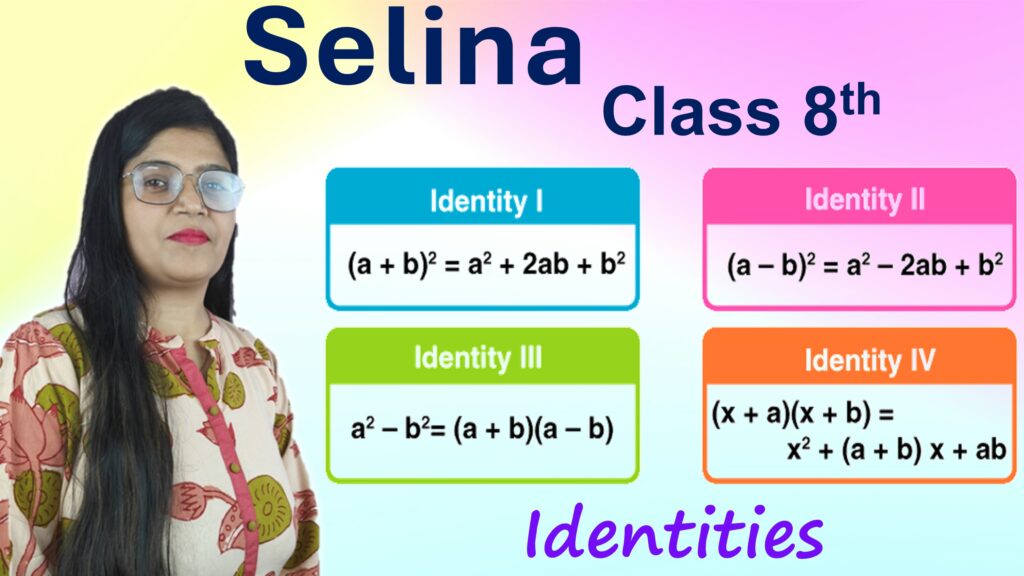Exercise: 2-B
Q1: Find the reciprocal of:
1. \( \frac{13}{17} \)
The reciprocal of \( \frac{a}{b} \) is \( \frac{b}{a} \).
The reciprocal of \( \frac{13}{17} \) is \( \frac{17}{13} \).
2. \( \frac{3}{313} \)
The reciprocal of \( \frac{3}{313} \) is \( \frac{313}{3} \).
3. \( 217 \)
The reciprocal of \( 217 \) is \( \frac{1}{217} \).
4. \( \frac{1}{1024} \)
The reciprocal of \( \frac{1}{1024} \) is \( 1024 \).
5. \( 3\frac{1}{3} \)
Convert mixed number to improper fraction: \( 3\frac{1}{3} = \frac{10}{3} \).
The reciprocal of \( \frac{3}{10} \).
6. \( 11\frac{1}{11} \)
Convert mixed number to improper fraction: \( 11\frac{1}{11} = \frac{122}{11} \).
The reciprocal of \( \frac{11}{122} \).
7. \( 1\frac{1}{2} \)
Convert mixed number to improper fraction: \( 1\frac{1}{2} = \frac{3}{2} \).
The reciprocal of \( \frac{2}{3} \).
8. \( 125\frac{1}{8} \)
Convert mixed number to improper fraction: \( 125\frac{1}{8} = \frac{1001}{8} \).
The reciprocal of \( \frac{8}{1001} \).
Q2: Divide:
1. \( \frac{1}{2} \div \frac{1}{3} \)
Step 1: Convert division to multiplication by the reciprocal of the second fraction:
\[
\frac{1}{2} \div \frac{1}{3} = \frac{1}{2} \times \frac{3}{1}
\]
Step 2: Multiply the fractions:
\[
\frac{1}{2} \times \frac{3}{1} = \frac{3}{2}
\]
Answer: \( \frac{3}{2} \)
2. \( \frac{3}{14} \div \frac{11}{42} \)
Step 1: Convert division to multiplication by the reciprocal of the second fraction:
\[
\frac{3}{14} \div \frac{11}{42} = \frac{3}{14} \times \frac{42}{11}
\]
Step 2: Multiply the fractions:
\[
\frac{3 \times 42}{14 \times 11} = \frac{126}{154}
\]
Step 3: Simplify the fraction:
\[
\frac{126}{154} = \frac{9}{11}
\]
Answer: \( \frac{9}{11} \)
3. \( 1 \div 6\frac{2}{3} \)
Step 1: Convert the mixed number to an improper fraction:
\[
6\frac{2}{3} = \frac{20}{3}
\]
Step 2: Convert division to multiplication by the reciprocal of the second number:
\[
1 \div \frac{20}{3} = 1 \times \frac{3}{20}
\]
Step 3: Multiply:
\[
1 \times \frac{3}{20} = \frac{3}{20}
\]
Answer: \( \frac{3}{20} \)
4. \( 13\frac{1}{3} \div 10 \)
Step 1: Convert the mixed number to an improper fraction:
\[
13\frac{1}{3} = \frac{40}{3}
\]
Step 2: Convert division to multiplication by the reciprocal of the second number:
\[
\frac{40}{3} \div 10 = \frac{40}{3} \times \frac{1}{10}
\]
Step 3: Multiply the fractions:
\[
\frac{40 \times 1}{3 \times 10} = \frac{40}{30}
\]
Step 4: Simplify:
\[
\frac{40}{30} = \frac{4}{3}
\]
Answer: \( \frac{4}{3} \)
5. \( 12\frac{1}{12} \div \frac{5}{36} \)
Step 1: Convert the mixed number to an improper fraction:
\[
12\frac{1}{12} = \frac{145}{12}
\]
Step 2: Convert division to multiplication by the reciprocal of the second fraction:
\[
\frac{145}{12} \div \frac{5}{36} = \frac{145}{12} \times \frac{36}{5}
\]
Step 3: Multiply the fractions:
\[
\frac{145 \times 36}{12 \times 5} = \frac{5220}{60}
\]
Step 4: Simplify:
\[
\frac{5220}{60} = 87
\]
Answer: \( 87 \)
6. \( \frac{13}{46} \div 2\frac{1}{11} \)
Step 1: Convert the mixed number to an improper fraction:
\[
2\frac{1}{11} = \frac{23}{11}
\]
Step 2: Convert division to multiplication by the reciprocal of the second fraction:
\[
\frac{13}{46} \div \frac{23}{11} = \frac{13}{46} \times \frac{11}{23}
\]
Step 3: Multiply the fractions:
\[
\frac{13 \times 11}{46 \times 23} = \frac{143}{1058}
\]
Answer: \( \frac{143}{1058} \)
7. \( \frac{20}{31} \div 54 \)
Step 1: Convert division to multiplication by the reciprocal of \( 54 \):
\[
\frac{20}{31} \div 54 = \frac{20}{31} \times \frac{1}{54}
\]
Step 2: Multiply:
\[
\frac{20 \times 1}{31 \times 54} = \frac{20}{1674}
\]
Step 3: Simplify:
\[
\frac{20}{1674} = \frac{10}{837}
\]
Answer: \( \frac{10}{837} \)
8. \( 9\frac{4}{5} \div 3\frac{23}{25} \)
Step 1: Convert the mixed numbers to improper fractions:
\[
9\frac{4}{5} = \frac{49}{5}, \quad 3\frac{23}{25} = \frac{98}{25}
\]
Step 2: Convert division to multiplication by the reciprocal of the second fraction:
\[
\frac{49}{5} \div \frac{98}{25} = \frac{49}{5} \times \frac{25}{98}
\]
Step 3: Multiply the fractions:
\[
\frac{49 \times 25}{5 \times 98} = \frac{1225}{490}
\]
Step 4: Simplify:
\[
\frac{1225}{490} = \frac{5}{2} = 2\frac{1}{2}
\]
Answer: \( 2\frac{1}{2} \)
9. \( 32\frac{1}{2} \div 8\frac{3}{4} \)
Step 1: Convert the mixed numbers to improper fractions:
\[
32\frac{1}{2} = \frac{65}{2}, \quad 8\frac{3}{4} = \frac{35}{4}
\]
Step 2: Convert division to multiplication by the reciprocal of the second fraction:
\[
\frac{65}{2} \div \frac{35}{4} = \frac{65}{2} \times \frac{4}{35}
\]
Step 3: Multiply the fractions:
\[
\frac{65 \times 4}{2 \times 35} = \frac{260}{70}
\]
Step 4: Simplify:
\[
\frac{260}{70} = \frac{26}{7} = 3\frac{5}{7}
\]
Answer: \( 3\frac{5}{7} \)
10. \( 8\frac{1}{21} \div 1\frac{6}{7} \)
Step 1: Convert the mixed numbers to improper fractions:
\[
8\frac{1}{21} = \frac{169}{21}, \quad 1\frac{6}{7} = \frac{13}{7}
\]
Step 2: Convert division to multiplication by the reciprocal of the second fraction:
\[
\frac{169}{21} \div \frac{13}{7} = \frac{169}{21} \times \frac{7}{13}
\]
Step 3: Multiply the fractions:
\[
\frac{169 \times 7}{21 \times 13} = \frac{1183}{273}
\]
Step 4: Simplify:
\[
\frac{1183}{273} = \frac{13}{3} = 4\frac{1}{3}
\]
Answer: \( 4\frac{1}{3} \)
11. \( 6\frac{3}{16} \div 3\frac{1}{7} \)
Step 1: Convert the mixed numbers to improper fractions:
\[
6\frac{3}{16} = \frac{99}{16}, \quad 3\frac{1}{7} = \frac{22}{7}
\]
Step 2: Convert division to multiplication by the reciprocal of the second fraction:
\[
\frac{99}{16} \div \frac{22}{7} = \frac{99}{16} \times \frac{7}{22}
\]
Step 3: Multiply the fractions:
\[
\frac{99 \times 7}{16 \times 22} = \frac{693}{352} = \frac{63}{32}
\]
Step 4: Simplify:
\[
\frac{63}{32} = 1\frac{31}{32}
\]
Answer: \( 1\frac{31}{32} \)
12. \( 3\frac{11}{15} \div 19\frac{3}{5} \)
Step 1: Convert the mixed numbers to improper fractions:
\[
3\frac{11}{15} = \frac{56}{15}, \quad 19\frac{3}{5} = \frac{98}{5}
\]
Step 2: Convert division to multiplication by the reciprocal of the second fraction:
\[
\frac{56}{15} \div \frac{98}{5} = \frac{56}{15} \times \frac{5}{98}
\]
Step 3: Multiply the fractions:
\[
\frac{56 \times 5}{15 \times 98} = \frac{280}{1470}
\]
Step 4: Simplify:
\[
\frac{280}{1470} = \frac{4}{21}
\]
Answer: \( \frac{4}{21} \)
Q3: By what fraction should \( \frac{9}{35} \) be multiplied to get \( \frac{7}{15} \)?
Step 1:
Let \( x \) be the required fraction.
\[
\frac{9}{35} \times x = \frac{7}{15}
\]Step 2:
Solve for \( x \):
\[
x = \frac{7}{15} \div \frac{9}{35} = \frac{7}{15} \times \frac{35}{9} = \frac{245}{135} = \frac{49}{27} = 1\frac{22}{27}
\]
Answer: \( 1\frac{22}{27} \)
Q4: If the cost of \( 6\frac{1}{4} \) m of cloth is ₹\( 1421\frac{7}{8} \), find the cost of 1 metre of cloth.
Step 1:
Convert mixed numbers to improper fractions:
\[
6\frac{1}{4} = \frac{25}{4}, \quad 1421\frac{7}{8} = \frac{11375}{8}
\]Step 2:
Find the cost of 1 metre of cloth by dividing total cost by the length:
\[
\text{Cost per meter} = \frac{11375}{8} \div \frac{25}{4} = \frac{11375}{8} \times \frac{4}{25} = \frac{45500}{200} = \frac{455}{2} = 227\frac{1}{2}
\]
Answer: ₹\(227\frac{1}{2}\)
Q5: How many pieces of length \( 3\frac{5}{7} \) m each can be cut from a 52 m long?
Step 1:
Convert mixed number to improper fraction: \( 3\frac{5}{7} = \frac{26}{7} \).
Divide total length by the length of each piece:
\[
\text{Number of pieces} = \frac{52}{\frac{26}{7}} = 52 \times \frac{7}{26} = 14
\]
Answer: 14 pieces
Q6: A log of wood \( 6\frac{2}{7} \) m in length is cut into 11 pieces. What is the length of each piece?
Step 1:
Convert mixed number to improper fraction: \( 6\frac{2}{7} = \frac{44}{7} \).
Divide the total length by the number of pieces:
\[
\text{Length of each piece} = \frac{44}{7} \div 11 = \frac{44}{7} \times \frac{1}{11} = \frac{44}{77} = \frac{4}{7}
\]
Answer: \( \frac{4}{7} \) m
Q7: A car covers \( 641\frac{1}{4} \) km in \( 43\frac{1}{8} \) litres of fuel. How much distance can this car cover in 1 litre of fuel?
Step 1:
Convert mixed numbers to improper fractions:
\[
641\frac{1}{4} = \frac{2565}{4}, \quad 43\frac{1}{8} = \frac{345}{8}
\]Step 2:
To find the distance per litre, divide the total distance by the total fuel consumption:
\[
\text{Distance per litre} = \frac{2565}{4} \div \frac{345}{8} = \frac{2565}{4} \times \frac{8}{345} = \frac{20520}{1380} = \frac{342}{23} = 14\frac{20}{23} \text{ km}
\]
Answer: \(14\frac{20}{23}\) km per litre
Q8: The area of a rectangular plot of land is \( 817\frac{4}{5} \) sq. m. If its breadth is \( 21\frac{3}{4} \) m, find its length.
Step 1:
Convert mixed numbers to improper fractions:
\[
817\frac{4}{5} = \frac{4094}{5}, \quad 21\frac{3}{4} = \frac{87}{4}
\]Step 2:
Use the formula for the area of a rectangle: Area = Length × Breadth.
To find the length, divide the area by the breadth:
\[
\text{Length} = \frac{4094}{5} \div \frac{87}{4} = \frac{4094}{5} \times \frac{4}{87} = \frac{16376}{435} = \frac{188}{5} = 37\frac{3}{5} \text{ m}
\]
Answer: \(37\frac{3}{5}\) m
Q9: The area of a sheet of paper is \( 623\frac{7}{10} \) sq. cm. If its length is \( 29\frac{7}{10} \) cm, find its width.
Step 1:
Convert mixed numbers to improper fractions:
\[
623\frac{7}{10} = \frac{6237}{10}, \quad 29\frac{7}{10} = \frac{297}{10}
\]Step 2:
Use the formula for the area of a rectangle: Area = Length × Width.
To find the width, divide the area by the length:
\[
\text{Width} = \frac{6237}{10} \div \frac{297}{10} = \frac{6237}{10} \times \frac{10}{297} = \frac{6237}{297} = 21 \text{ cm}
\]
Answer: 21 cm
Q10: A bundle of 500 sheets of paper has a net weight of \( 2\frac{3}{10} \) kg. Find the weight of 1 sheet of paper.
Step 1:
Convert the mixed number to an improper fraction:
\[
2\frac{3}{10} = \frac{23}{10}
\]Step 2:
To find the weight of 1 sheet, divide the total weight by the number of sheets:
\[
\text{Weight of 1 sheet} = \frac{23}{10} \div 500 = \frac{23}{10} \times \frac{1}{500} = \frac{23}{5000} = 0.0046 \text{ kg}
\]
Answer: \(\frac{23}{5000}\) kg = 0.0046 kg = 4.6 g
Q11: A car travels \( 283\frac{1}{2} \) km in \( 4\frac{2}{3} \) hours. How does this car go in 1 hour, travelling at the same speed?
Step 1:
Convert mixed numbers to improper fractions:
\[
283\frac{1}{2} = \frac{567}{2}, \quad 4\frac{2}{3} = \frac{14}{3}
\]Step 2:
To find the speed per hour, divide the total distance by the total time:
\[
\text{Speed} = \frac{567}{2} \div \frac{14}{3} = \frac{567}{2} \times \frac{3}{14} = \frac{1701}{28} = \frac{243}{4} = 60\frac{3}{4}\ \text{ km/hr}
\]
Answer: \(60\frac{3}{4}\) km/hr or 60.75 km/hr
Q12: The product of two fractions is \( 8\frac{7}{25} \). If one of them is \( 3\frac{1}{15} \), find the other.
Step 1:
Convert mixed numbers to improper fractions:
\[
8\frac{7}{25} = \frac{207}{25}, \quad 3\frac{1}{15} = \frac{46}{15}
\]Step 2:
Let the other fraction be \( x \). So,
\[
\frac{46}{15} \times x = \frac{207}{25}
\]
Solve for \( x \):
\[
x = \frac{207}{25} \div \frac{46}{15} = \frac{207}{25} \times \frac{15}{46} = \frac{207 \times 15}{25 \times 46} = \frac{3105}{1150} = \frac{27}{10} = 2\frac{7}{10}
\]
Answer: \( 2\frac{7}{10} \)







Leave a Comment